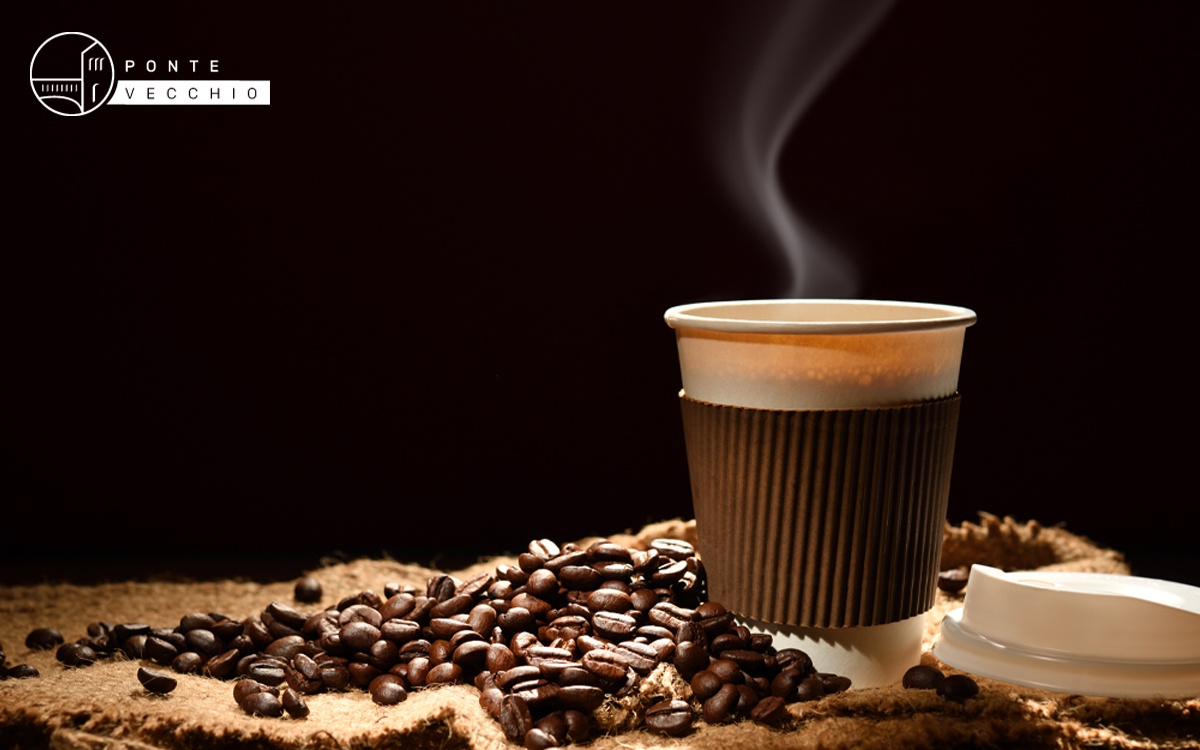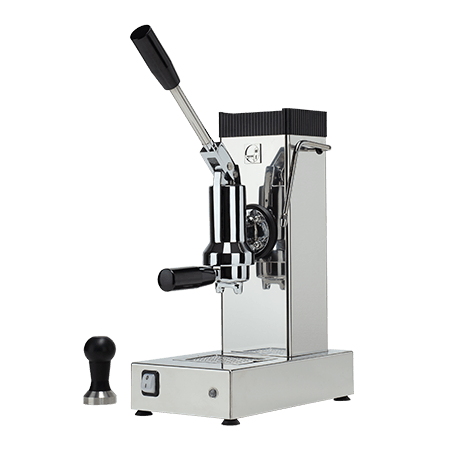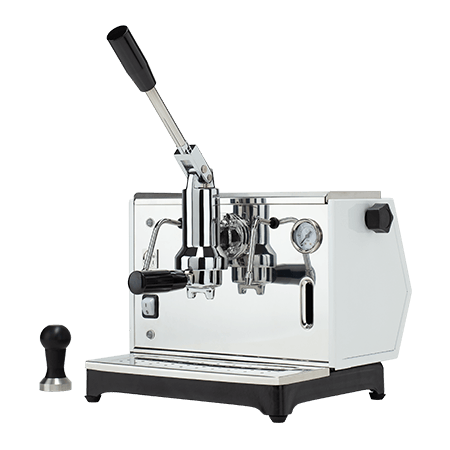For Italians, coffee is a real pleasure.
Some prefer to drink it at the bar, because they love the taste of coffee prepared with an espresso coffee machine, while others remain fond of the classic mocha pot.
Nowadays, there are a lot of machines designed to prepare coffee as good as at the bar, even at home, because many people like to sip the black drink at home.
The choice of coffee machine depends on taste and the type of coffee you prefer to drink.
But that is not all.
Some types of coffee require time and expertise. Just think of coffee beans, which retain their organoleptic characteristics longer than powdered coffee, but require the use of a grinder.
You might not believe it, but there are actually more than 30 types of coffee in the world!
In fact, every country has very different traditions and customs for serving the black stuff.
Among the most famous is our espresso coffee, but American long coffee, cappuccino, Irish coffee, Turkish coffee, iced coffee, as well as many varieties of coffee specialities, such as the Salento coffee, are also very popular.
Technology has evolved a lot and, today, with a professional coffee machine it is possible to control all the parameters that make this substance good and tasty:
- the temperature of the water;
- the pressing of the coffee;
- the quantity of powder to be added;
- the grinding;
- the preservation of the beans;
- the extraction time;
- the pressure of the machine;
- the volume of liquid.
True experts can tell from the smell the type of machine used and distinguish burnt or bitter coffee from a distance. They can tell you which is their favourite place and where to sip the perfect coffee.
Not every coffee lover, however, can be considered a true connoisseur. However, by taking a survey, everyone has developed his or her own sensibility and can definitely tell if he or she likes home-made coffee, coffee from the bar or if he or she remembers well a restaurant or hotel where he or she was served a good espresso.
If you are a coffee lover yourself, in this article you can read how espresso coffee was born and what features the right coffee machine should have for you!
What is espresso coffee
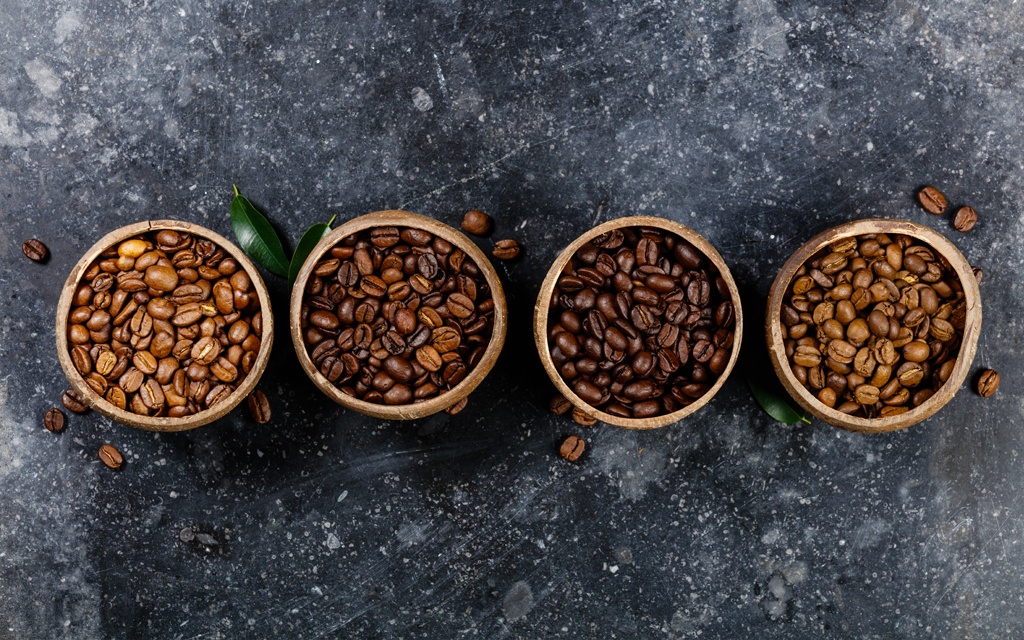
Espresso coffee is the best known and most popular type of coffee in Italy. Its name derives not only from the procedure necessary to obtain it but also from the choice of raw material.
The taste of an excellent espresso, in fact, is the result of roasting and grinding the seeds of Coffea Arabica and Coffea Robusta.
So it all starts with a well thought-out blend of beans that is finely ground in the coffee grinder. The beans must all be the same size before they are put into the coffee machine and pressed, so that the high temperature does not spoil the aroma of the coffee.
The process of making espresso coffee is called percolation and is done by the high pressure induced by the hot water. This is a real step, in which the hot water passes through a layer of coffee of about 7/9 grams and, in just 25 seconds, captures all its characteristics. The hot water then acts as a solvent, extracting a liquid substance from a solid: coffee.
This transformation and its timing are truly fascinating. And it is really interesting to think how much a series of small and large factors can affect the characteristics of a cup of coffee. However, it is the strength and freshness of the roasted coffee beans, the temperature of the water and the type of machinery used to prepare the coffee that determine its properties:
- cream;
- aroma;
- body;
- aftertaste.
In addition, the way in which the beans are stored should never be underestimated. The full flavour is obtained immediately after opening the package, as delivered by the manufacturer. The blend, in fact, tends to spoil and lose its characteristics as the days go by.
Coffee’s worst enemies are atmospheric agents: air, heat and humidity, which alter its taste and cause it to lose its characteristic creaminess.
How it comes about
Espresso coffee seems to have always been part of Italian culture. To think of an Italy without espresso would be like depriving it of one of its symbols of identity. However, the birth of espresso coffee, as we know it, is quite recent and dates back to the mid 1900s.
The first instant coffee machine is linked to the name of Angelo Moriondo, the owner of a coffee shop in the Turin area, who needed to serve his customers quickly. His patent was registered in 1884 but the machine had very different technical characteristics to those used for espresso coffee.
The real leap forward came in 1901, when Luigi Bezzera from Milan patented a machine capable of giving the drink the unique creaminess that is characteristic of espresso coffee. In particular, he equipped the machine with a single filter holder handle, capable of producing a single cup of coffee.
The patent was then bought by Desiderio Pavoni, who started mass production of the machines.
The turning point, however, came in 1938, when Achille Gaggia equipped the machine with a piston system that pushed water at high temperature through the coffee powder.
Since 1938, Gaggia’s machine has become the cornerstone of espresso coffee in the world and there have been technical improvements based on his invention. The coffee obtained from his pressure espresso coffee machine is served in every Italian bar today: a thick, creamy, non-bitter espresso without the burnt aftertaste.
Over the years, Gaggia continued to refine his invention and in 1947, he introduced the lever system that we still use today.
The difference between espresso, short and long coffee.
Depending on taste, espresso coffee can be served in different ways. Some people like their coffee in a cup and some in a glass, some prefer it bitter and some very sweet. But one of the main differences in the taste of coffee is determined by the amount of water that is allowed to flow into the cup.
Long coffee is the one with about 35/50 mm of water and has a higher dilution. Its taste is more bitter and contains a greater amount of caffeine than traditional espresso. It is much appreciated by those who like to enjoy their coffee slowly and take a few extra minutes to sip their drink.
Restricted coffee, on the other hand, has a smaller amount of water, around 18/25 mm, and is much denser than long coffee. It only contains the first fractions of the coffee powder and its caffeine concentration is considerably reduced. ristretto coffee is ideal for those who want an intense, full-bodied drink.
These three espresso variations can be obtained by adjusting the amount of water in the cup. The ingredients are the same, but by changing one small detail, the coffee and its ritual take on a totally different taste.
With other subtle variations, all kinds of results can be achieved:
- just add a little milk and, less often, cream to make a coffee macchiato, which can be drunk hot or cold;
- for those with a sweet tooth, an espresso with cream is a speciality, served in a cup and topped with whipped cream;
- corrected coffee is reserved for those who add an alcoholic beverage to flavour the coffee, such as grappa or sambuca;
- in the Veneto region, coffee rexentìn is popular, in which the coffee grounds in the cup are ‘rinsed’ with the spirit used for the correction.
Which coffee do you prefer?
How to make espresso with the lever machine
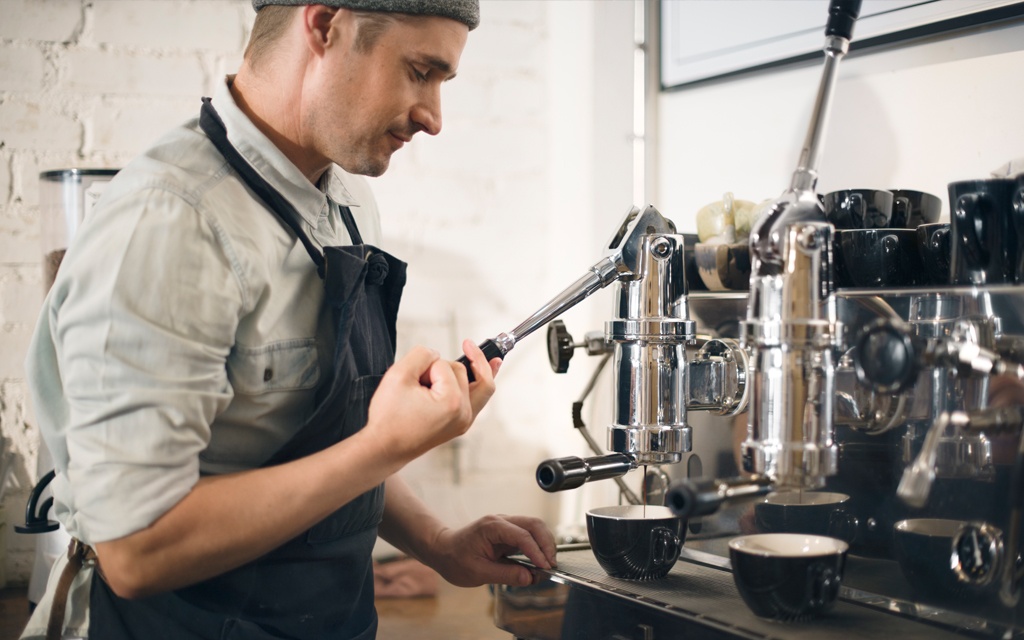
The lever coffee machine is the machine that has made espresso coffee history throughout the world. It has been in use for almost eighty years and its admirers continue to grow.
If you are a true coffee lover and you aim to prepare a perfect espresso coffee for you and your guests, there are some tricks you have to respect when using it.
In fact, just varying the amount of water and temperature, the dose of coffee powder and the proportion of the blend can alter the taste of the coffee.
But that’s not all! To prepare coffee in the best possible way, you need to be familiar with the tools and ingredients you use.
The cylinder and the plunger are the two fundamental elements on which the success of the drink depends.
How do they work?
When you lower the lever, the plunger rises and lets in the water required for the amount of coffee you want to make.
By managing these tools in the best possible way, you will be able to obtain a perfect coffee with your lever machine, characterised by the density of the crema, intense aroma and strong taste.
Let’s see what steps you need to follow to make the best use of our professional coffee machine.
- Dose your coffee correctly
The perfect coffee is extracted from 7.5 grams of powder. To learn how to use the correct amount, try using a kitchen scale.
- Press the powder without exaggerating
Depending on the grind, you can apply more or less force when pressing the coffee. To do this best and avoid unevenness, lean on the measuring cup and apply pressure in circular movements.
- Lower the lever
Insert the filter holder into the machine, press and turn it to the right. Put the cup in position and lower the whole lever.
- Wait 25 seconds
After three seconds the coffee will start to come out. The right time to have a great coffee is 25 seconds.
The best espresso coffee machines… Our machines
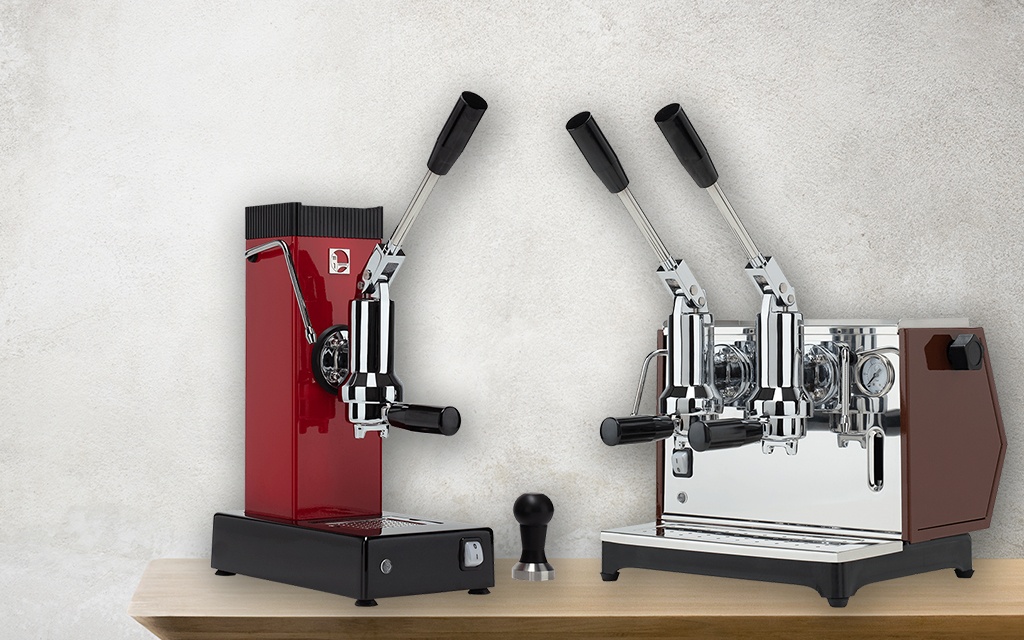
For over twenty years, we at Pontevecchio Srl have been manufacturing lever coffee machines. Our equipment is ideal both for the home, to recreate a coffee corner in the kitchen, and for professional use.
We have types of coffee machines suitable for various contexts, with a vintage design to bring out the link with taste and tradition in every situation.
The coffee machines of the 1940s and the typical Milanese coffee shops have been our source of inspiration. However, what we want is to spread a coffee culture with unique organoleptic characteristics.
The lever coffee machines we produce consist of several parts, which are useful for maintaining the quality of the coffee.
Its main elements are the cylinder and the plunger. Their operation is simple but essential to regulate the flow of water. When the lever is lowered, the piston is raised, leaving the hole free through which the water flows into the cylinder. This mechanism ensures that the water always remains clean as it does not allow residues to enter the boiler.
The system has two enormous advantages:
- the internal pipes remain clean and maintenance-free;
- the coffee retains its taste over time.
The lever coffee machine improves the skill of the barista, the true coffee expert.
It is thanks to the continuous experimentation of these professionals that we have arrived at the espresso coffee as we know it today. This is why, with our coffee machines, the barista can manage all the stages of extraction, from the contact of the water with the blend to the quantity of coffee to be used. Thanks to the control in the pre-infusion phase, he is able to maintain the taste and aromatic characteristics of the coffee blend.
Let’s take a look at the features of our lever espresso machines.
Lever espresso coffee machine Export
The lever coffee machines of the Export line are ideal for those who have little space but do not renounce to the pleasure of a good coffee at home. Their structure is linear and they have a very simple design.
They operate mechanically, a feature that totally distinguishes them from modern electric coffee machines. The manual mechanism guarantees their durability and makes them perfect for everyday use.
The only electrical element they have is used to bring the water to the ideal temperature.
Its line is elegant and, thanks to its chromatic variations, it is suitable for environments of all kinds. This means that once you’ve used it, you won’t be forced to discard it because it doesn’t match your kitchen.
You can consider the Export coffee machine a real piece of furniture, to be shown to your guests with great pride.
The available colours are:
- White;
- Golden;
- Stainless steel;
- Black;
- Red;
- Tobacco.
By choosing the most suitable colour for your home, you will make your environment even more chic and coordinated.
Lever espresso coffee machine Lusso 1
The lever espresso machines of the Lusso I line consist of a single brewing group. These machines also have a mechanical motor that does not alter the taste of the coffee and makes the equipment durable over the years.
They have a control unit to heat the water. But their functions are many more.
The control unit is connected to a probe that monitors the temperature and the amount of water in the boiler. In the event of a water shortage, the probe lights up a warning light to warn you of the shortage and prevent the machine from being damaged.
The probe also cuts off the current to the heating element in case there is no water, so that the lever machine is not damaged.
The Lusso I coffee machine also has a very useful energy-saving feature. Once the ideal water pressure for good coffee has been reached, it switches off automatically.
Another feature is the presence of a pressure gauge, a device that checks the water pressure and monitors the operation of the boiler. Keep in mind that water pressure is one of the most important elements in extracting a perfect espresso.
In addition to the pressure gauge, the coffee machine has two wands: one for hot water with which to prepare tea or herbal teas and the other for using steam to heat milk or other drinks.
The available colour variants are:
- White;
- Stainless steel;
- Black;
- Red;
- Tobacco.
The colours are neutral and suitable to be combined with any kind of furniture.
Espresso lever machine Lusso II
The professional lever espresso machine of the Lusso II line has two groups and allows four coffees to be prepared at the same time. It is very suitable for small businesses that prepare a few cups of coffee a day and want to serve their guests with an eye for taste and design. They are ideal in cosy and well-kept environments such as bars, holiday farms, restaurants and bed and breakfasts.
These machines operate mechanically but are equipped with an electrical control unit. A probe is connected to the control unit, which lights up a warning light if there is a lack of water in the boiler. It also has the function of interrupting the current supply from the heating element, when there is no water, to prevent the machine from breaking down.
The chrome plate has two groups to serve several coffees at the same time. This type of equipment was designed by Ercolino Bernini himself, the creator of Pontevecchio lever machines. In fact, with the aim of creating a more powerful machine, he created a network of channels for dispensing under the brass plate.
The available colour variants are:
- White;
- Stainless steel;
- Black;
- Red;
- Tobacco.
Are you ready to enjoy an espresso coffee like the one in the bar?
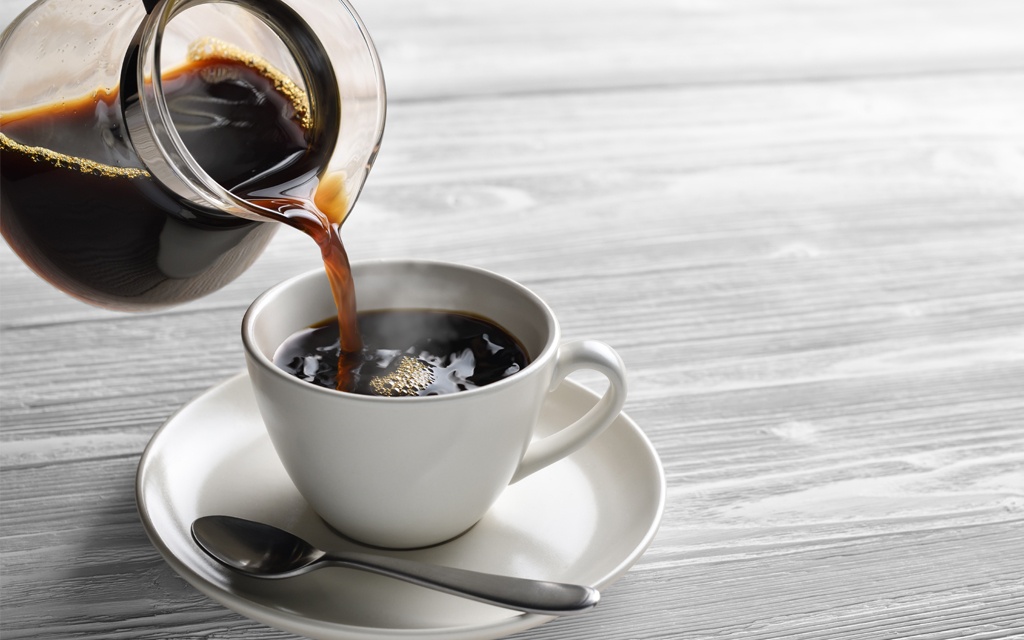
Espresso coffee is the drink par excellence to be drunk when you wake up and to be enjoyed at any time of the day. In Italy, it is a real ritual and “drinking a coffee” is a convivial moment, a break or a small pampering to be indulged in to get off to a great start.
This drink is one of the most consumed in the world, but each country has its own way of serving it and a typical recipe for preparing it.
Espresso coffee is a true symbol of Italianness and its origins date back to the first half of the 20th century. It was invented to speed up service in bars and cafés, so that all customers could be satisfied in the shortest possible time.
The first coffee machine capable of preparing an espresso with the characteristics we know today was designed by Achille Gaggia, who also introduced the piston system.
Espresso coffee is prepared through a process called percolation, in which the water passes through the coffee mixture and takes all its characteristics.
In order to make a perfect coffee, it is necessary to carefully choose the ingredients and, above all, to evaluate well what kind of coffee machine to use.
Pontevecchio lever coffee machines are mechanical. This guarantees a long duration in time, thanks to the choice of robust and resistant materials.
We have opted for a design suitable for any kind of furnishing style, able to reconstruct an atmosphere similar to that of the old coffee shops.
Our production is focused on three lines: lever coffee machines of the Export line, lever coffee machines of the Lusso I line, professional lever coffee machines of the Lusso II line.
Now is the time to choose the one that best suits your home and your needs.

